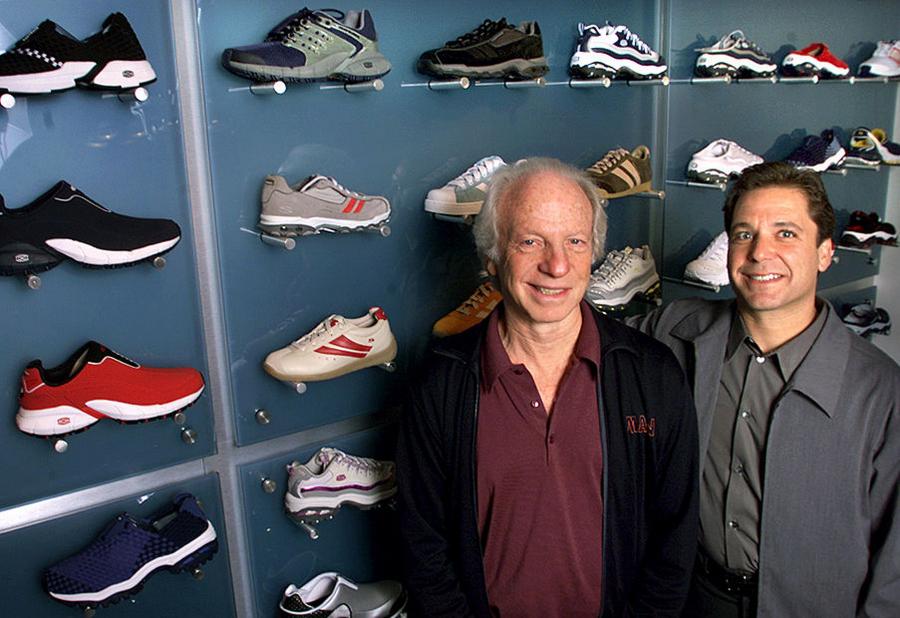Yesterday, a private equity firm called 3G Capital announced it had struck a deal to acquire Sketchers for $9.4 billion. Sketchers is publicly traded. The company's market cap was actually quite a bit higher a few months ago. As recently as January 31, Sketchers' market cap was nearly $11.5 billion.
Sketchers manufactures its products in China and Vietnam, two countries that were particularly hard hit by Trump's tariff insanity. As a result, the company's stock price sank, sending the market cap down to around $7 billion before the acquisition news. So while $9.4 billion may be less than $11.5 billion, it's much larger than $7 billion… or potentially less depending on what happens in the coming months.
But this isn't a business or political website. So why am I telling you about Sketchers? Because the family that created the brand has a very interesting and inspirational backstory…
From Mail-Order Toupees To Billionaire Shoe Moguls
In the early 1960s, Robert Greenberg was a hairstylist working in Brookline, Massachusetts. Hoping to make some extra money, he launched a mail-order toupee business. It was the first in a long line of eccentric entrepreneurial attempts. He sold antique clocks imported from South Korea. He tried his hand at electronic tweezers, jeans, roller skates, and even "E.T."-themed shoelaces. None of it really worked. Then he struck gold, for a while, with a sneaker company called L.A. Gear.
L.A. Gear rode the aerobics craze of the 1980s to massive success. In 1990, the company generated over $800 million in revenue. It was flashy, trendy, and everywhere — until it wasn't. The company collapsed, and Robert was forced out. But he wasn't done.
Sketchers
In 1992, Robert and his son Michael launched Skechers out of a modest office in Manhattan Beach, California. The company began as a distributor for Dr. Martens boots, but quickly shifted into private-label footwear. Their big idea? Import affordable, stylish sneakers from Asia that looked like the big brands but sold at a lower price point.
Their first big hit came with the Chrome Dome — a men's utility boot that caught fire with teens. Then came the Energy line, a platform sneaker for women that exploded in popularity in the late '90s. That momentum led Skechers to go public in 1999, giving the Greenbergs another shot at building a sneaker empire — this time with more staying power.
Unlike Nike and Adidas, Skechers never tried to be the coolest brand on the shelf. Instead, it carved out a lucrative lane in comfort-first, everyday footwear. Over the years, it quietly expanded into performance categories like running, walking, and golf, while maintaining a massive catalog of lifestyle and work shoes.
Skechers now sells in over 180 countries, with 62% of its revenue coming from outside the U.S. The company brought in $9 billion in revenue in 2024, a record year despite mounting macroeconomic headwinds.
And yes, those headwinds were serious: Skechers sources most of its product from Vietnam and China — two countries slammed by a 145% Trump-imposed tariff on certain imports. In April, the company withdrew its annual guidance, citing too much uncertainty.

Skechers founders, Robert Greenberg and son Michael Greenberg (Photo by Carlos Chavez/Los Angeles Times via Getty Images)
The $1.1 Billion Payday
As we mentioned at the top of the article, yesterday it was revealed that Sketchers will be acquired by a private equity firm called 3G Capital for $9.4 billion. Sketchers will join other 3G Capital-owned brands, Burger King and Tim Hortons.
The Greenberg family collectively owns about 12% of the company. Depending on which payout structure they choose (straight cash vs. a mix of cash and equity in the new parent company), the Greenbergs are poised to walk away with around $1.1 billion.
The ownership is spread across two family trusts. In addition to Robert and Michael, five of Robert's other children — Jennifer, Scott, Jeffrey, Jason, and Joshua — are beneficiaries. Jason and Josh are both senior Skechers executives. The rest hold board seats or non-operational roles.
Still Running the Show
Even after the deal closes, Robert Greenberg (now in his 80s) will stay on as CEO. Michael will remain president. The company is going private, but the family remains firmly in control.
That's the real takeaway here: After decades of trial, error, failure, reinvention, and slow, steady growth, the Greenbergs didn't just build a shoe company — they built a dynasty. It's one of the most successful family-run consumer brands in modern American history.
And it all started with a haircut and a box of wigs.










 Bengali (BD) ·
Bengali (BD) ·  English (US) ·
English (US) ·